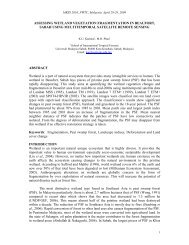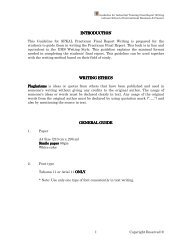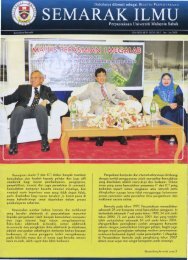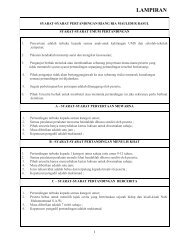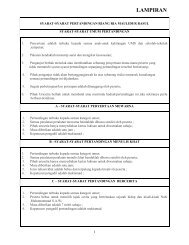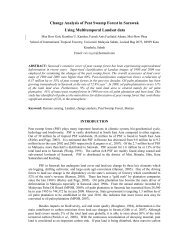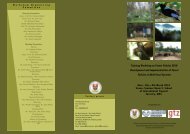Report for the German Agency for Technical Cooperation (GTZ) - UMS
Report for the German Agency for Technical Cooperation (GTZ) - UMS
Report for the German Agency for Technical Cooperation (GTZ) - UMS
You also want an ePaper? Increase the reach of your titles
YUMPU automatically turns print PDFs into web optimized ePapers that Google loves.
Fig. 1: Extent of de<strong>for</strong>estation in Borneo 1950-2005, and projection towards 2020. (source:<br />
http://maps.grida.no/go/graphic/extent-of-de<strong>for</strong>estation-in-borneo-1950-2005-and-projectiontowards-2020<br />
Radday, M, WWF <strong>German</strong>y. 2007. 'Borneo Maps'. January 24, 2007. Hugo<br />
Ahlenius, UNEP/GRID-Arendal)<br />
The emissions due to de<strong>for</strong>estation and degradation of <strong>for</strong>ests amounts a quarter to a fifth of<br />
all GHG produced by man (WWF). In order to limit <strong>the</strong> accumulation of CO2 in <strong>the</strong><br />
atmosphere and thus <strong>the</strong> global warming <strong>the</strong> conservation of <strong>for</strong>ests is of particular<br />
importance. The REDD mechanism respective initiative attaches an economic value to <strong>the</strong><br />
ability of <strong>for</strong>ests to store carbon (Tab. 1). This value is meant to be a financial resource which<br />
offers <strong>the</strong> possibility to subsist <strong>the</strong> local communities of developing countries to spare <strong>the</strong><br />
<strong>for</strong>ests.<br />
Fig. 2: CO2 emissions of Top ten emitting countries. Emissions from Land Use Change &<br />
Forestry (LUCF), 2000 (source: Earthtrends 2008)<br />
4



